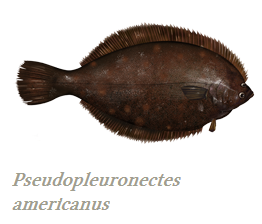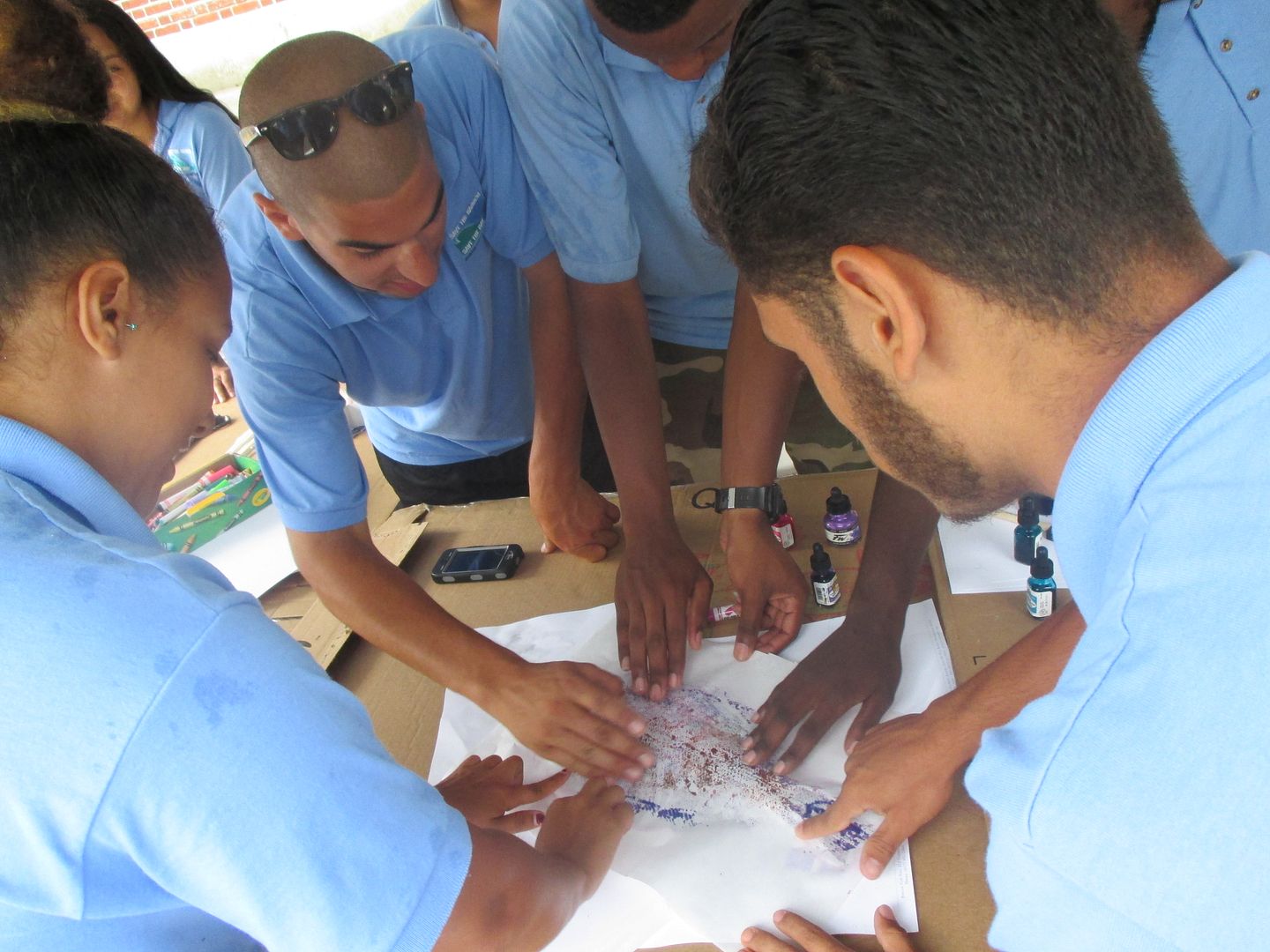 The Summer Flounder (Paralicthys dentatus), also known as a Fluke, is distributed throughout the Atlantic Ocean ranging from Nova Scotia to the east coast of Florida. Summer Flounder can live up to 14 years and can grow to lengths of 2-3ft. Although adult flounder are flat as adults, they start life off looking like a "normal fish". It isn't until they go through a metamorphosis that they become flat and their eyes shift. In the case of the Summer Flounder, its transformation puts both eyes on the left side of its body. Summer Flounder are opportunistic feeders and will eat anything that comes their way. Their flat bodies and color changing camouflage techniques allow the flounder to ambush its prey. This often includes small fish and crustaceans. Although coloration can vary form brown to grey, Summer Flounder are white underneath and have spots on their backs. This can be a key way in distinguishing a summer flounder from other species because at least five of these dark spots are arranged in an "X" pattern.
The Summer Flounder (Paralicthys dentatus), also known as a Fluke, is distributed throughout the Atlantic Ocean ranging from Nova Scotia to the east coast of Florida. Summer Flounder can live up to 14 years and can grow to lengths of 2-3ft. Although adult flounder are flat as adults, they start life off looking like a "normal fish". It isn't until they go through a metamorphosis that they become flat and their eyes shift. In the case of the Summer Flounder, its transformation puts both eyes on the left side of its body. Summer Flounder are opportunistic feeders and will eat anything that comes their way. Their flat bodies and color changing camouflage techniques allow the flounder to ambush its prey. This often includes small fish and crustaceans. Although coloration can vary form brown to grey, Summer Flounder are white underneath and have spots on their backs. This can be a key way in distinguishing a summer flounder from other species because at least five of these dark spots are arranged in an "X" pattern. The second specie of flounder found in the harbor is the Winter Flounder (Pseudopleuronectes americanus), commonly referred to as a Sole. Unlike their cousin the summer flounder, the winter flounder's eyes are located on the right side of their bodies. They can be found along the east coast, and more commonly north of the Delaware Bay. Winter flounder can live for 18 years and grow to about 2ft in length. They can range in coloration from muddy brown, olive green, and black. Their under bellies are white, and the dorsal and anal fins are tinged pink, red or yellow.
The second specie of flounder found in the harbor is the Winter Flounder (Pseudopleuronectes americanus), commonly referred to as a Sole. Unlike their cousin the summer flounder, the winter flounder's eyes are located on the right side of their bodies. They can be found along the east coast, and more commonly north of the Delaware Bay. Winter flounder can live for 18 years and grow to about 2ft in length. They can range in coloration from muddy brown, olive green, and black. Their under bellies are white, and the dorsal and anal fins are tinged pink, red or yellow.Catching one of these flat fish isn't as hard as you may think. Whether on the beach, a pier, or a boat flounder can be caught with simple hook and line techniques (just be sure to include a weight to bring the line all the way to the bottom!). Although, it is important to note state regulations, open and closed seasons, and size regulations when fishing for any species of fish.
Once caught, flounder can be quickly filleted and made into many tasty meals! Check out the "how to" video below and the link for some easy and great recipes such as stuffed flounder and fried flounder!
All Recipes: Flounder
Before filleting your catch, flounder can also be used to make beautiful works of art. Inspired by the traditional Japanese style of gyotaku, flounder painted with inks can then been pressed with rice paper to transfer over the delicate details of the fish body that are enhanced and picked up by the ink. |
| Fish prints done by kids who visited our tent at the 2014 Boston Seafood Festival |
 |
| Artists hard at work! Save the Harbor/Save the Bay summer staff attempt their first fish print! |
 |
| Drying the finished products at the 2014 Boston Seafood Festival |
For step by step instructions check out this link!
After printing, the flounder can still be filleted and cooked to eat as long as the inky skin is removed. Once all that is left is the "fish frame" or carcass, it can be used as bait for future fishing trips or in lobster pots. Thus making the act of flounder fishing and printing a sustainable one!
For more information on flounder, the status of the species,
and fishing regulations check out these websites!


No comments:
Post a Comment